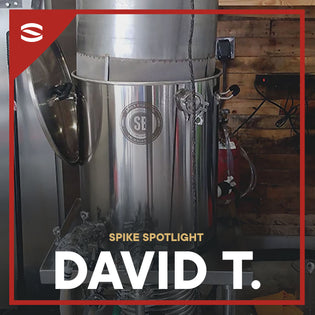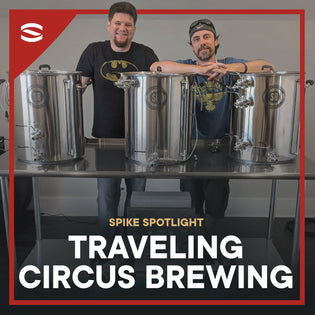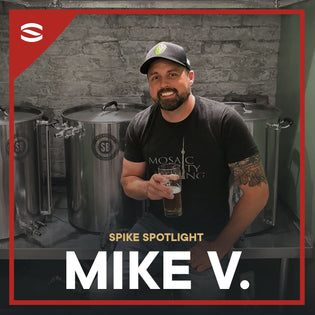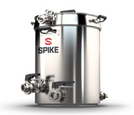
-

Name: David T. (@smallfarmbrewing)
Where he is from: Broken Arrow, OK
Spike brewing equipment he owns: CF10 conicals (2), Custom 20 gallon tri-clamp kettle, various accessories
Homebrew Club: Fellowship of Oklahoma Alemakers
Website - https://alemakers.org/
FB – https://www.facebook.com/FOAMClub/ > @FOAMclub
Years brewing: 4 years
Brewing setup: Electric BIAB
Favorite beer? That's like asking a parent which their favorite child is! It varies greatly though I have been trying to perfect my German lagers recently.
How he got into homebrewing:A friend of mine gave me the remnants of his basic home brewing kit he had in college, mainly just a bottling bucket, carboy, a few brushes, and a keg. Some of it was salvageable some of it wasn't. I went down to High Gravity, my LHBS, and filled some of the holes in my system to get started. Two extract batches in and I was hooked! Thus starting the never ending series of improvements. Going from brew in a bag to cooler based systems to 3 vessel eRIMS and finally settling on the eRIMS brew in a bag set up I currently have. It is over engineered but that is part of the fun!
-

If you have one available to you, I recommend you join a home brew club. A lot of my core knowledge came from some of the seasoned brewers in my club. I have many mentors in my club and I feel I learned something valuable from all of them.
Start by educating yourself as much as you can on the whole process from start to finish. Particularly, pay attention to water chemistry and fermentation (pitching rate, fermentation temperature) as they are often the most influential factors in the beers final flavor.
I feel maybe too much emphasis is placed on wort production (hot side). Beer is made in the fermenter. Read brewing related books. The two books that probably elevated my beers the most have been Yeast: The Practical Guide to Fermentation and Water: A Comprehensive guide for Brewers.
-


Being able to keep my beer completely away from oxygen exposure after fermentation had started. My IPA's and light lagers saw the largest improvements. Keeping that vibrant hop character and fresh grainy flavor from the pilsner malt respectively. My medal winning percentage has increased considerably after being able to spund my lagers and limit oxygen ingress for my beers altogether.

-
My conicals have made a pretty large impact on my beer. From keeping oxygen ingress to an absolute minimum once the wort is in the fermenter to easily being able to harvest and reuse clean yeast. Those and many other small changes they have made to my process has elevated my beer from good to great.

About a year ago I started harvesting yeast for my lagers. I really just wanted to see if I could do it and what its effect would be. I have had the best luck by cold crashing my beer for several days, racking my beer to kegs then collecting all that remains in a 1 gallon jar. I will usually end up with 1 quart of thick slurry once it has been washed, if needed, and settled.









